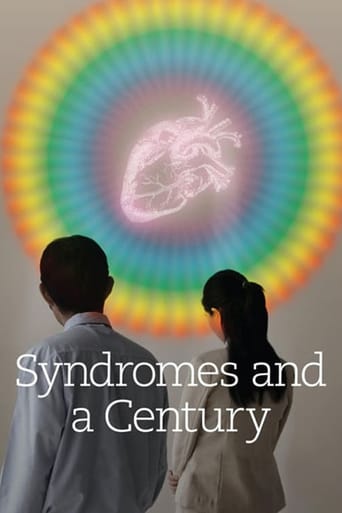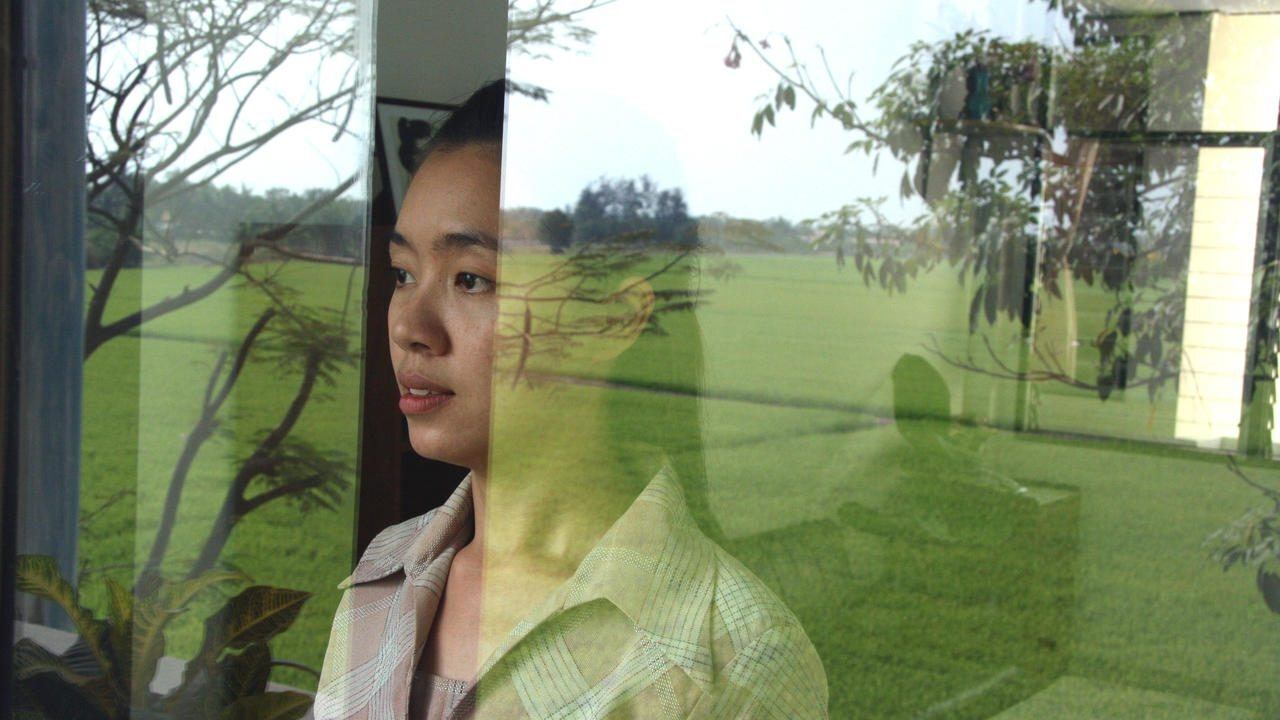ep_ep
I have read several reviews and found this very amusing. Actually I have seen this movie and couldn't figure out what so artistic about it. This is more like Andy Warhol shooting a film about a man sleeping eight hours on screen. Warhol considers this art. Now this film is almost similar. If you want art take a lesson from the real master.Someone did mention Kubrick somewhere, don't compare him to this guy. It's a different story. Back to art, anyone who is a fan of Kurosawa? How about Fellini? Also there is Gus Vant Sant. Don't tell me this film can be compared to the art of these true artists.This (Sang Sattawat) is to me a real sleep movie. ZZZZZZZZZZZZZZ
Cliff Sloane
I have now seen three of Apichatpong's films (Mysterious Objects, Blissfully Yours and now this). It finally occurred to me what is going on and why so many people, already enamored of offbeat, experimental and artsy films, still find his work difficult.I really got into "Mysterious Objects" at first, the "exquisite corpse" method and the way a simple story got embellished as he went along. But Apichatpong seemed to lose interest in the narrative, so the film became a static slide show of his travels, losing all of its narrative energy."Sud Saneha" (Blissfully Yours) never got me engaged. It was an agonizing experience in lost opportunity and self-indulgent amateurism.So now, I can say that "Syndromes and a Century" is by far the best of the three. I gave it 6 out of 10.I finally understood that Apichatpong is an artist of still images. He has no idea what to do with emotions or the people who feel them. He just allows them to populate his canvas, and pays no attention to what they do. In fact, if they do nothing and stay still, that's even better.The camera moves from time to time, but that is clearly just giving better depth to his still images. He has no skills in using images that move, other than to take them in in a decidedly passive way. There are times in this movie when it is effective (the steam entering the pipe, for example), but most of the time, it underscores his discomfort with the moving image.I really want to like his films, mostly because here in Thailand, popular culture is so crushing and stifling, anything artistic is like drops of water in a desert. But I can only cut so much slack.
bandw
There is a story to be found here somewhere, but it is cleverly hidden among a grab bag of images. Ostensibly it is about the director's parents who were both doctors. But they are on screen for about 10% of the movie. Director Weerasethakul uses skillful framing and subtle color to create some remarkable images. There are some very sensual scenes of natural settings. The majority of scenes seem to be thrown in due to random firings in the director's brain. There are long slow takes circling statues that come from nowhere and go nowhere and lots of prolonged shots of people staring into space. There is one scene capturing a perfectly ordinary dental procedure that goes on for several minutes and another scene of great length of an exhaust vent sucking smoke out of a room. This latter is somewhat transfixing, but I can't see why it's there.The movie creates a mood, but I often found that mood to be one of annoyance. If anyone can explain the meaning of the English title ("Syndromes and a Century") please let me know.This one is definitely for the art house crowd.
Howard Schumann
Funded by the city of Vienna as part of the celebration marking the 250th anniversary of Mozart's birth, Syndromes and a Century by Thai director Apichatpong Weerasethakul (Blissfully Yours, Tropical Malady), is a visionary masterpiece that blurs the boundaries of past and present and, like the plays of Harold Pinter, explores the subjectivity of memory. It is an abstract but a very warm and often very funny film about the director's recollections of his parents, both doctors, before they fell in love. According to Apichatpong, however, it is not about biography but about emotion. "It's a film about heart", he says, "about feelings that have been forever etched in the heart." Structured in two parts similar to Tropical Malady, the opening sequence takes place in a rural hospital surrounded by lush vegetation. A woman doctor, Dr. Toey (Nantarat Sawaddikul) interviews Dr. Nohng (Jaruchai Iamaram), an ex-army medic who wants to work in the hospital, the two characters reflecting the director's parents. The questions, quite playfully, are not only about his knowledge and experience but also about his hobbies, his pets, and whether he prefers circles, squares or triangles. When asked what DDT (Dichloro-diphenyl-trichloroethane) stands for, he replies, "Destroy Dirty Things".Like the fragmented recollection of a dream, the film is composed of snippets of memory that start suddenly then end abruptly without resolution. A dentist wants to become a singer and takes an interest in one of his patients, a Buddhist monk whose dream is to become a disc jockey. A fellow doctor awkwardly proclaims his desperate love for Dr. Toey who relates to him a story about an infatuation that she had with an orchid expert who invited her to his farm. A woman doctor hides a pint of liquor inside a prosthetic limb. A monk tells the doctor of some bad dreams he has been having about chickens. A young patient with carbon monoxide poisoning bats tennis balls down a long hospital corridor.Syndromes and a Century does not yield to immediate deciphering as it moves swiftly from the real to the surreal and back again. Halfway through the film, the same characters repeat the opening sequence but this time it is in a modern high-tech facility and the mood is changed as well as the camera focus. The second variation is less intimate than the first, but there are no overarching judgments about past or present, rural or urban, ancient or modern. Things are exactly the way that they are and the way they are not, and we are left to embrace it all. Towards the end, a funnel inhales smoke for several minutes as if memories are being sucked into a vortex to be stored forever or forgotten. Like this serenely magical film, it casts a spell that is both hypnotic and enigmatic.


 AD
AD



